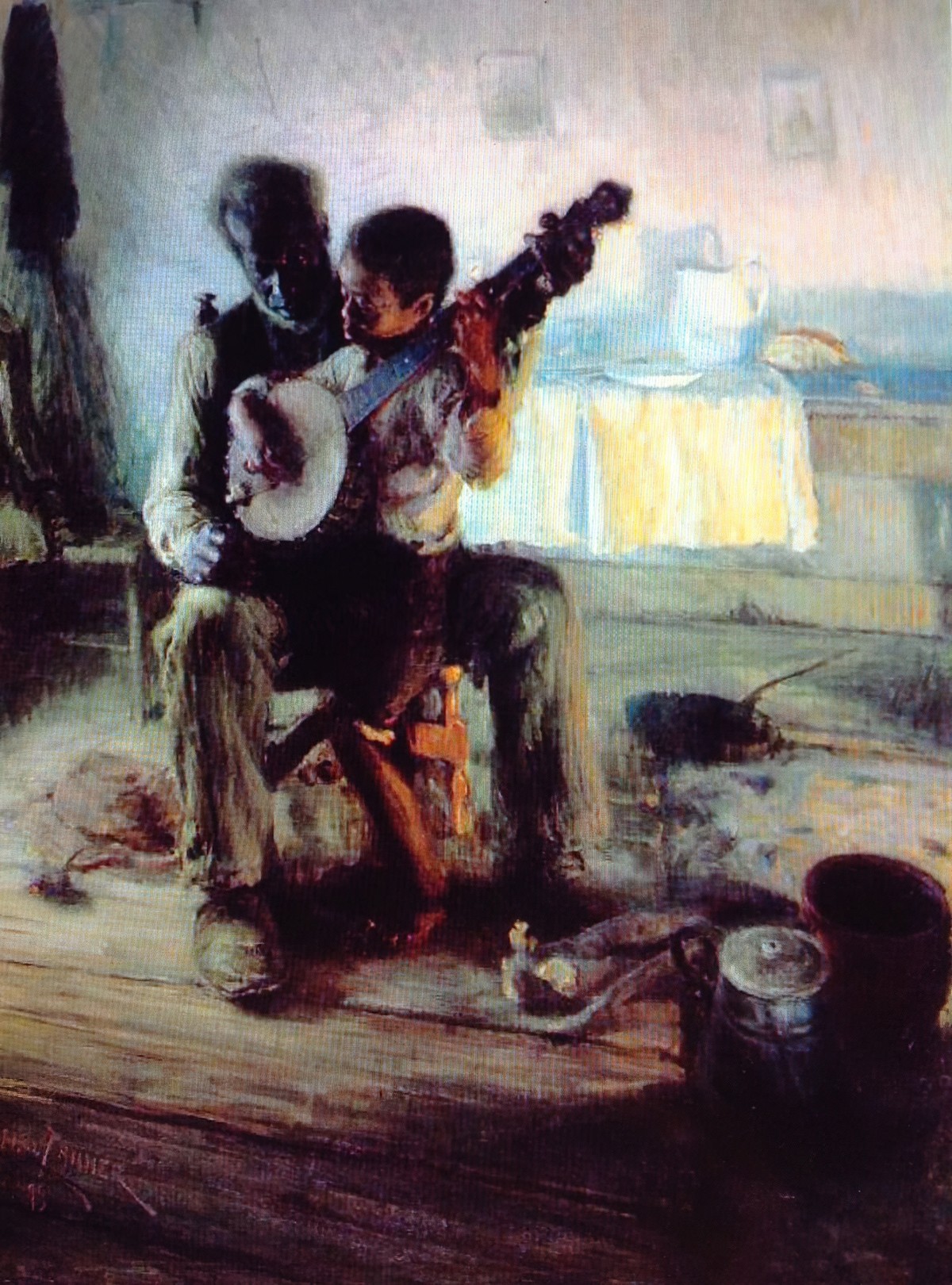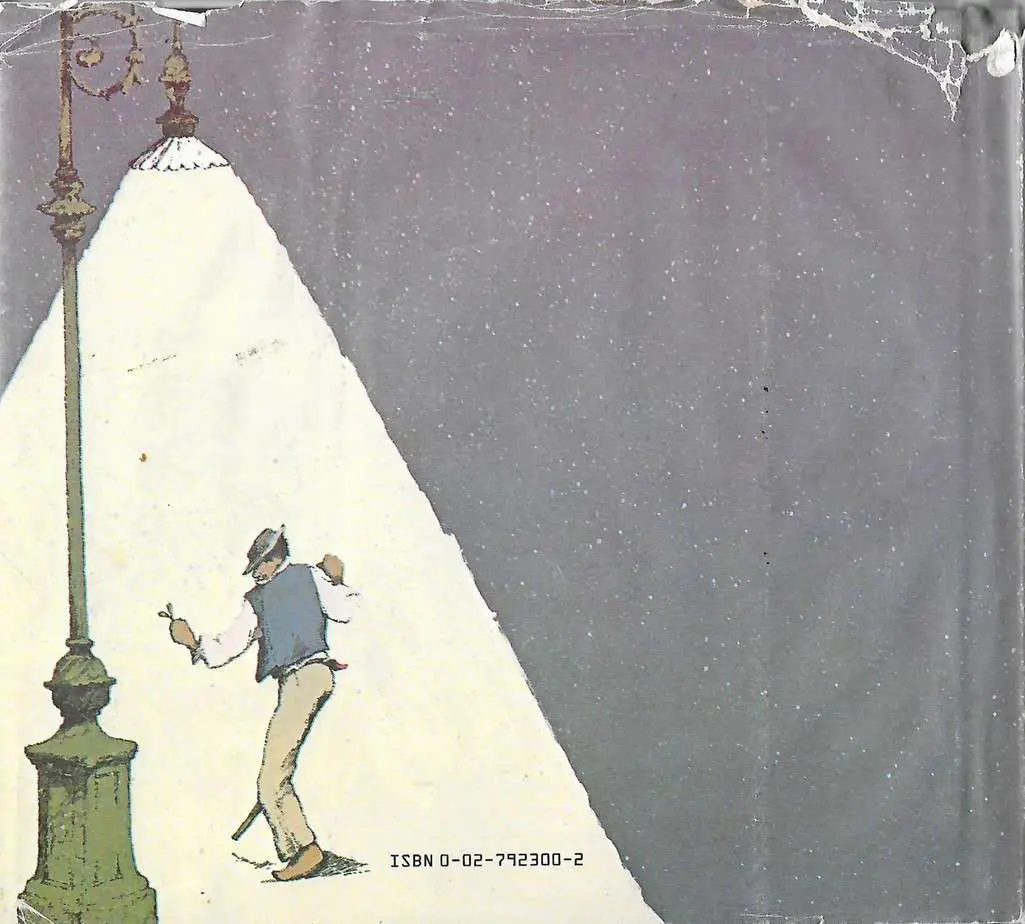Ty’s One-Man Band (1980) is a picture book written by Mildred Pitts Walter and illustrated by Margot Tomes. This is a good mentor text if you’re writing a picture book with plenty of rhythmic onomatopoeia. If reading to modern kids, they might find this slow, quiet picture book a bit more exciting if encouraged to bang away with wooden spoons or blow into comb and tissue instruments.
This picture book was popularised after featuring in Season One of Reading Rainbow, though hadn’t managed to enjoy the longevity of some of those other picture books from the early 1980s.
SETTING OF TY’S ONE-MAN BAND
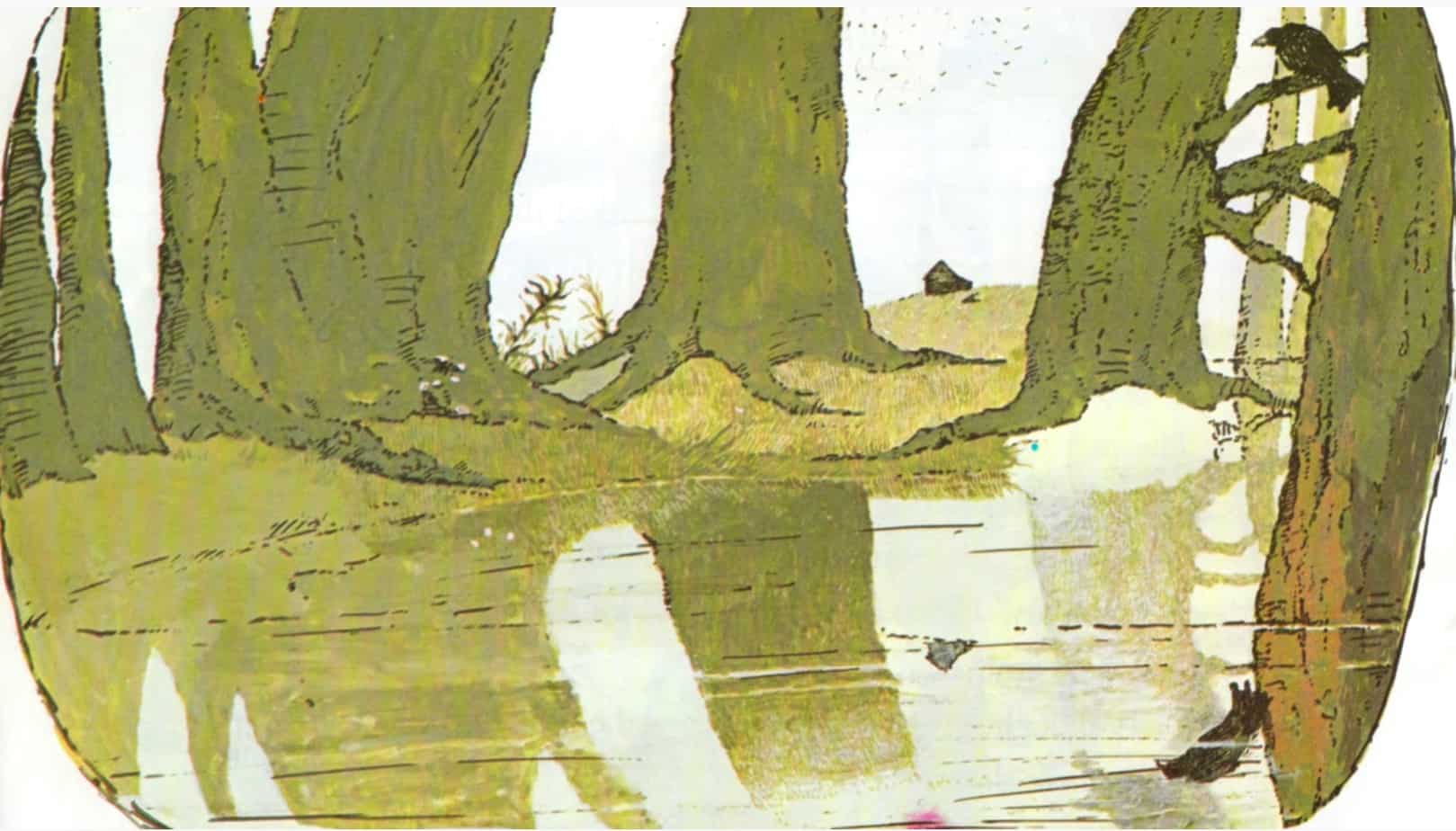
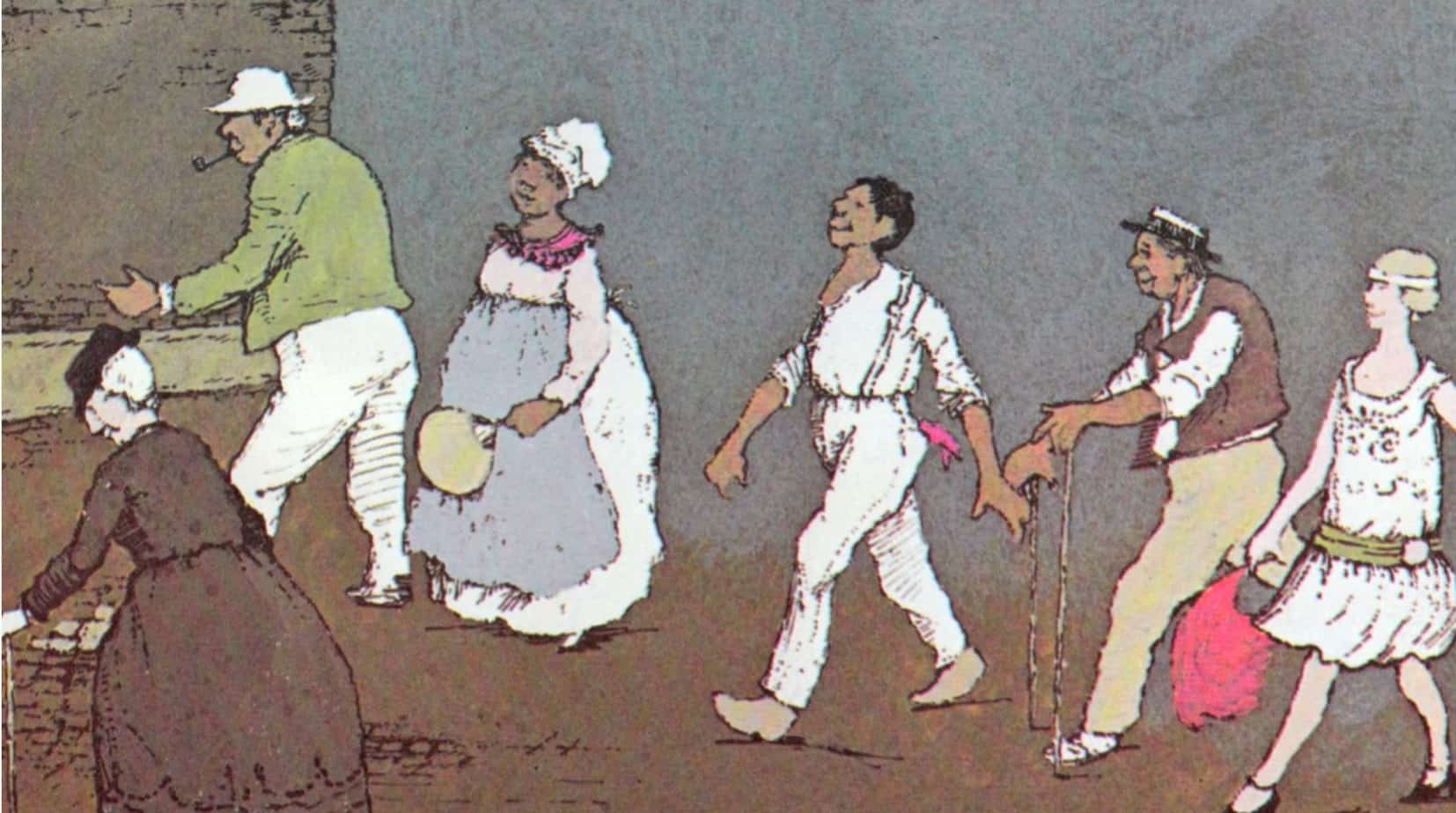
PERIOD — This is ambiguous, and I think deliberately so. Some of the characters are dressed in 1980s contemporary fashion. Others are dressed in flapper fashion reminiscent of the 1920s, others in clothes from the mid-1800s, and still others in mid- to late-1900s clothing. Is this an attempt to signal to the reader that this is a timeless tale?
The painting below shows how travelling from house to house playing music was once a way for the poor to scrape together a little money for subsistence.
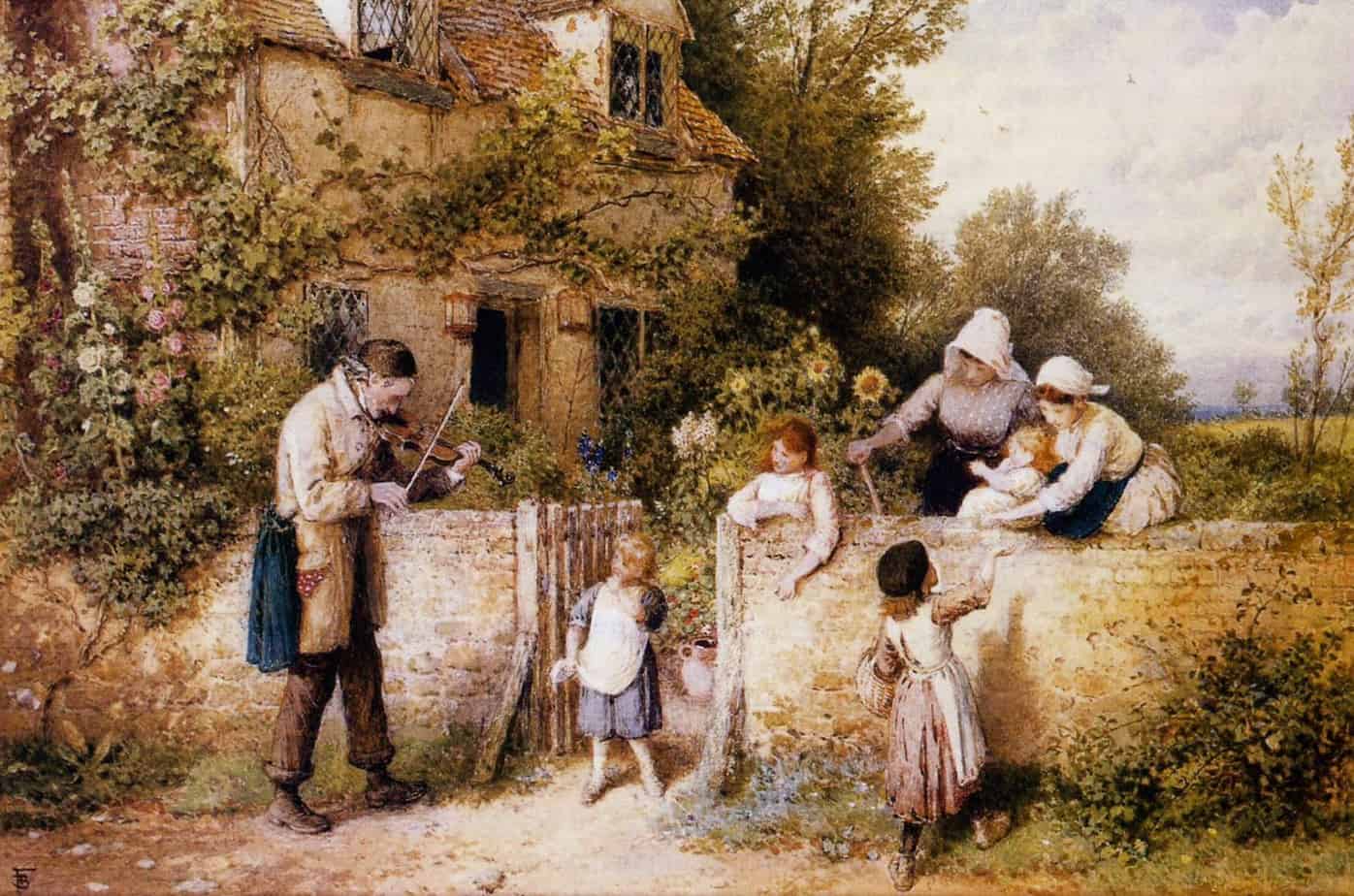
And here is a poor mother trying to get by selling ballads?
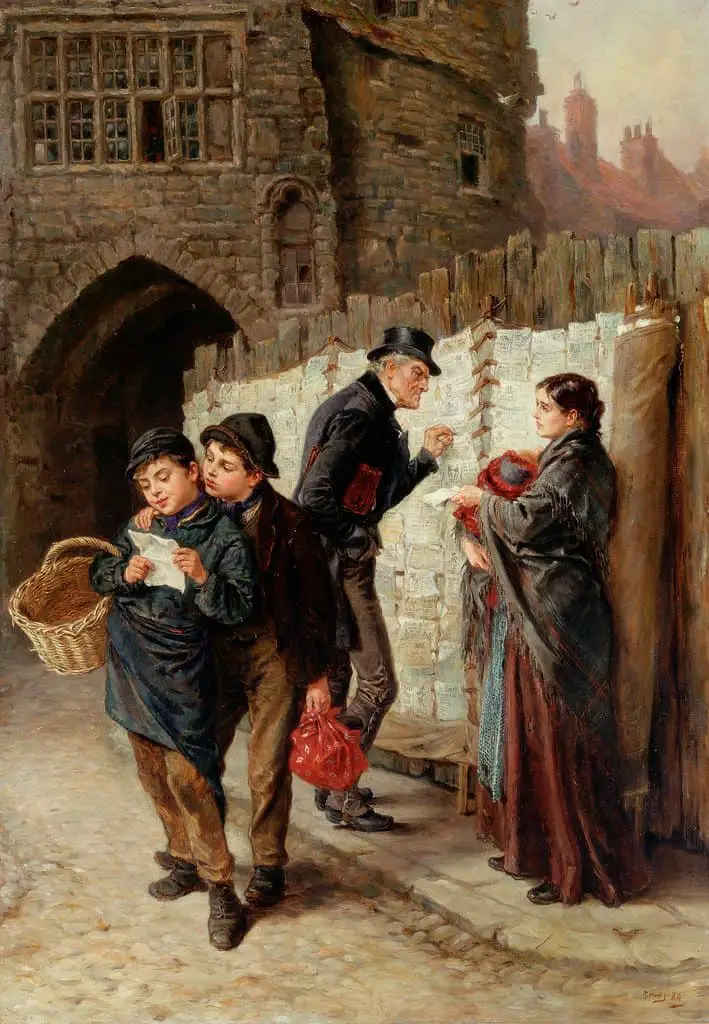
DURATION — The length of a single (12 hour) day.
LOCATION — The location is pretty specific, Southern USA.
ARENA — A village on the edge of some woods, but these woods feel humid and muggy and I’m reminded of Australia’s “Waltzing Matilda” when Ty reaches the pond, in which a vagabond stranger sits near the water for a bit of relaxation. This pond is more billabong than the utopian pond we often see in picture books. There is definitely something ominous about it, suggested by the detail that a boy could ‘get lost’ in the tall grass. (The tall grass ultimately enables him to hide, but I was worried he was going to get lost… or drown. I guess I can’t shake Waltzing Matilda.)
MANMADE SPACES — Ty lives in a cosy house next to the wilderness of woods and pond. We see the town centre, where townsfolk gather. We know the house is cosy because the parents are industriously keeping house and the sister seems tied to the kitchen making cornbread. (She’s there in the morning and still there when Ty comes home.) But Big Sister doesn’t mind. She is jovial and happy for her little brother to take off with two wooden spoons. Cosy, I tell you.
NATURAL SETTINGS — The forest is the Southern American variety of boggy, humid space which probably provides a bit of cool on a hot day due to the cover of trees.
WEATHER — It’s the hottest part of summer, when it’s so hot people don’t really want to do anything. The brother declares it’s too hot to accompany Ty on his outing.
TECHNOLOGY CRUCIAL TO THIS PARTICULAR STORY — The musical instruments in this story are the kind that can be fashioned by pretty much anyone, out of common household items. I remember making a tissue and comb flute when I was a kid. The novelty didn’t last long, but it did make a surprisingly satisfying sound.
LEVEL OF CONFLICT — Ty is the youngest in his family, still the most childlike, and is even the most childlike among his friends. Why does no one believe him when he says he’s met a man in the woods? Is that so unbelievable. I suggest Ty has a bit of a history with fanciful thinking.
THE EMOTIONAL LANDSCAPE — There may or may not be a huge difference between what is real in the veridical world of the story and how Ty perceives it, depending on whether you read the One-Man Band man as real or imaginative.

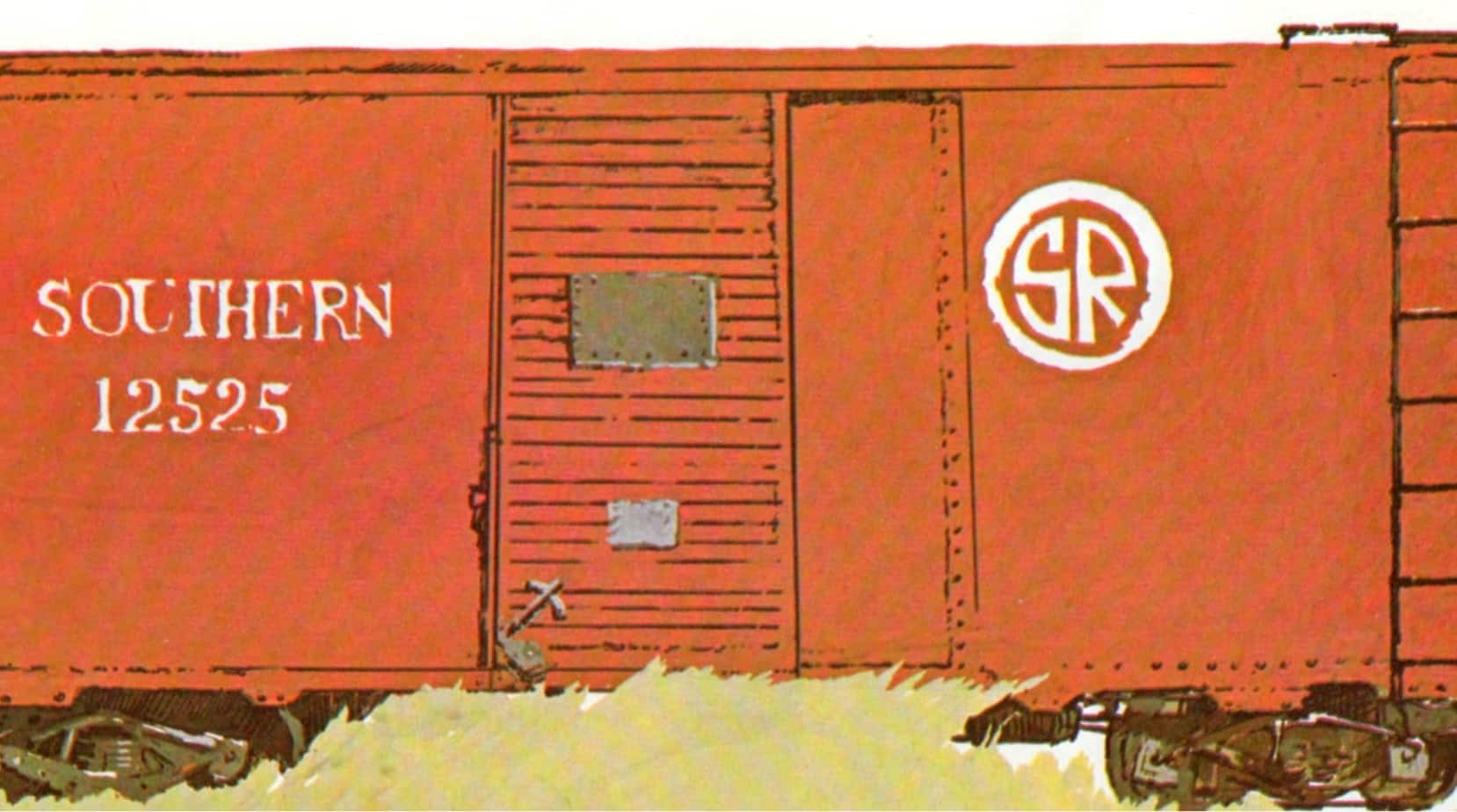
STORY STRUCTURE OF TY’S ONE-MAN BAND
At first I thought this was the child-audience equivalent of a Deal With The Devil story, and Ty is Robert Johnson. I still kind of think it is that kind of story, even though it didn’t end as I expected. While Ty is waiting for the One Man Band to reappear, I expected the music to start, but I thought the man himself was not going to appear; that Ty would make music on his own. The man does reappear in bodily form, but I continue to read the One-Man Band as possibly a figment of Ty’s imagination. It might be Ty making the music while imagining an adult mentor.
Evidence for that? No one else in the story believes the man is real. Hell, if they did, they might be a bit worried about a boy going to a pond in the woods to meet a man who has requested his presence at nightfall… but then I remember this is a book of the early eighties. Kids had a lot more freedom back then.
Separately, works of art like the one below make me wonder how common it was for men to travel from town to town showing off to groups of mainly children.
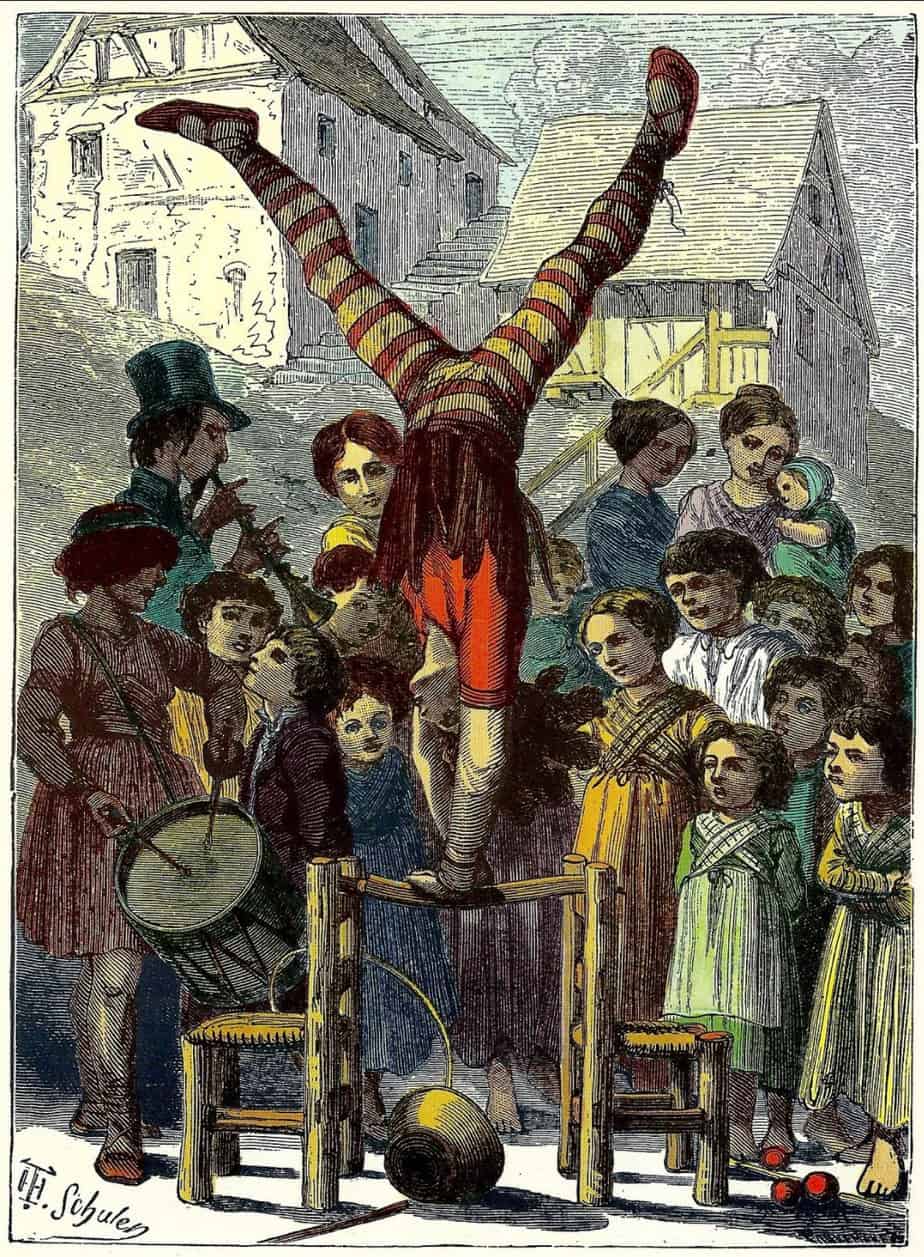
Ty functions as a viewpoint character for a story that is ostensibly about a mysterious adult.
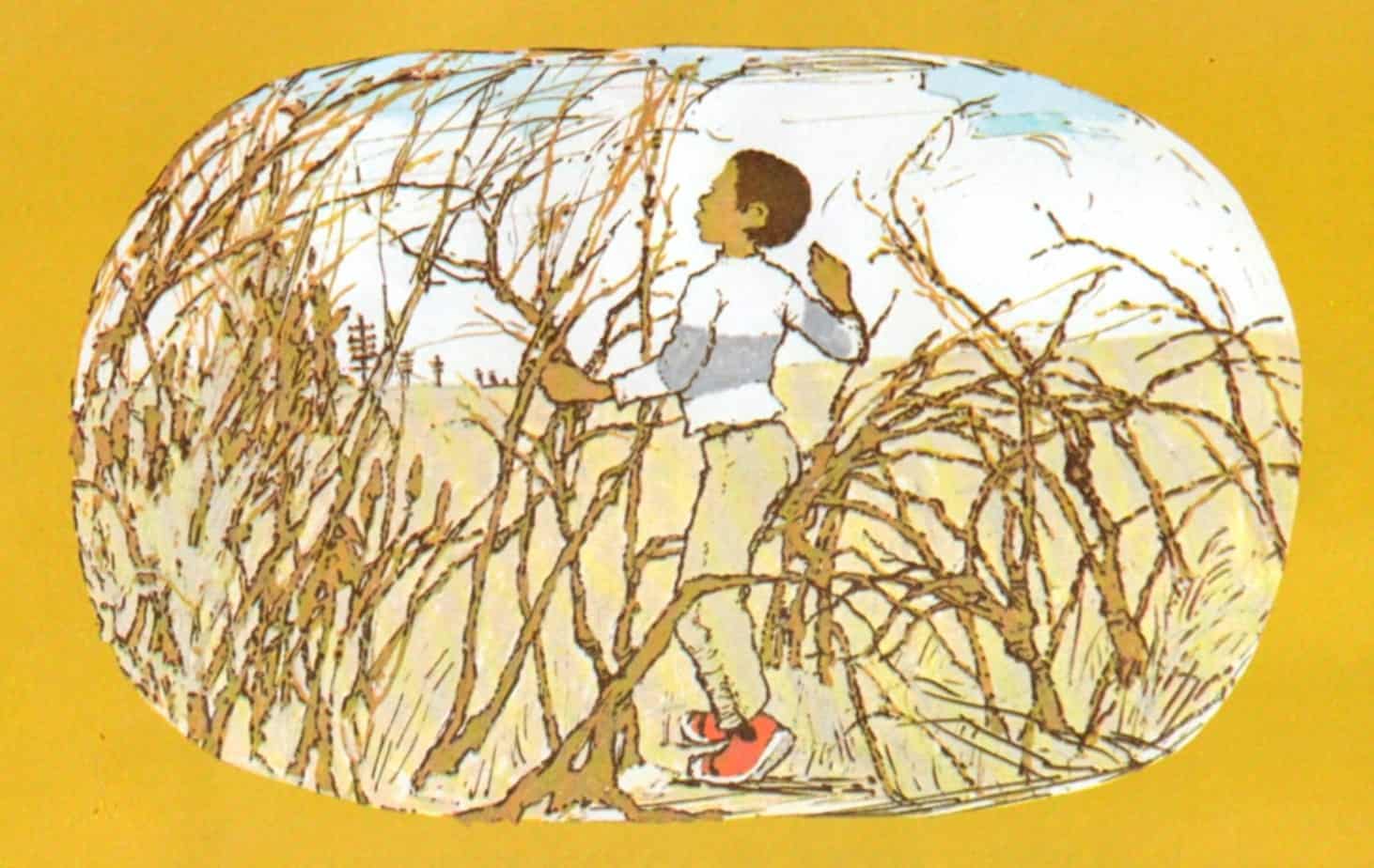
PARATEXT
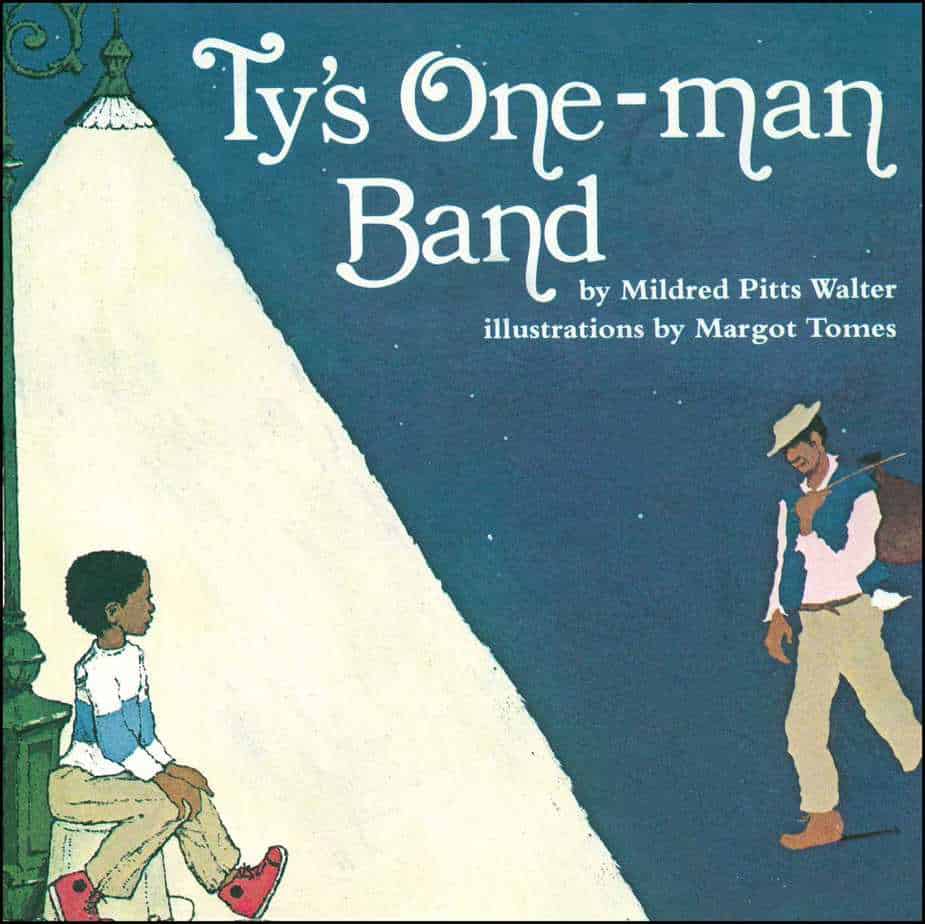
On a hot, humdrum day Ty meets a man who, using a washboard, comb, spoons, and pail, fills that night with music.
MARKETING COPY
SHORTCOMING
This is one of those stories that begins with the character in a state of boredom. Everyone else is too busy to hang out. I wonder why, of all the people in the family, only Ty has free time on this day.
DESIRE
Driven by boredom, Ty goes to this pond he knows in the woods.
OPPONENT
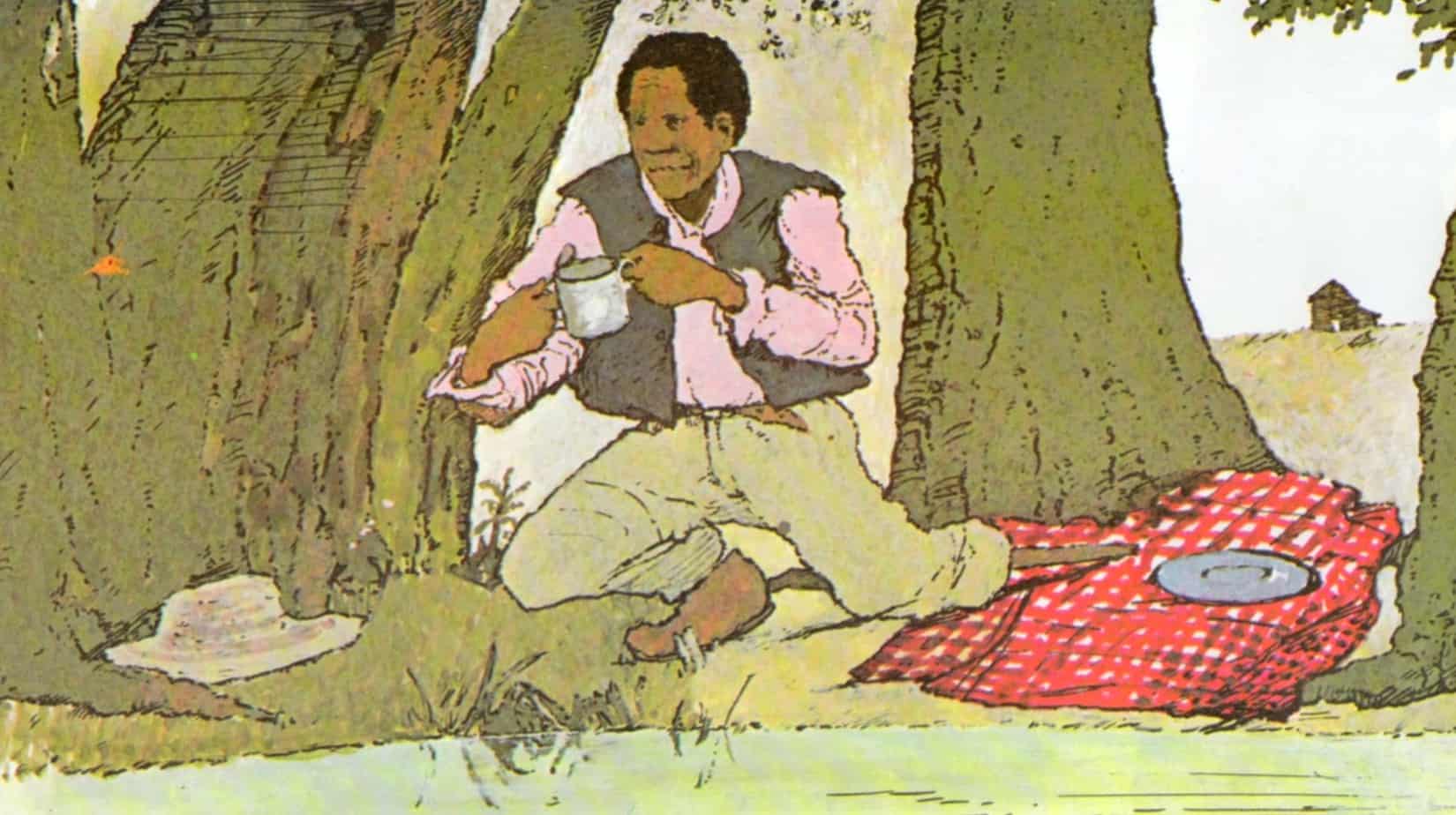
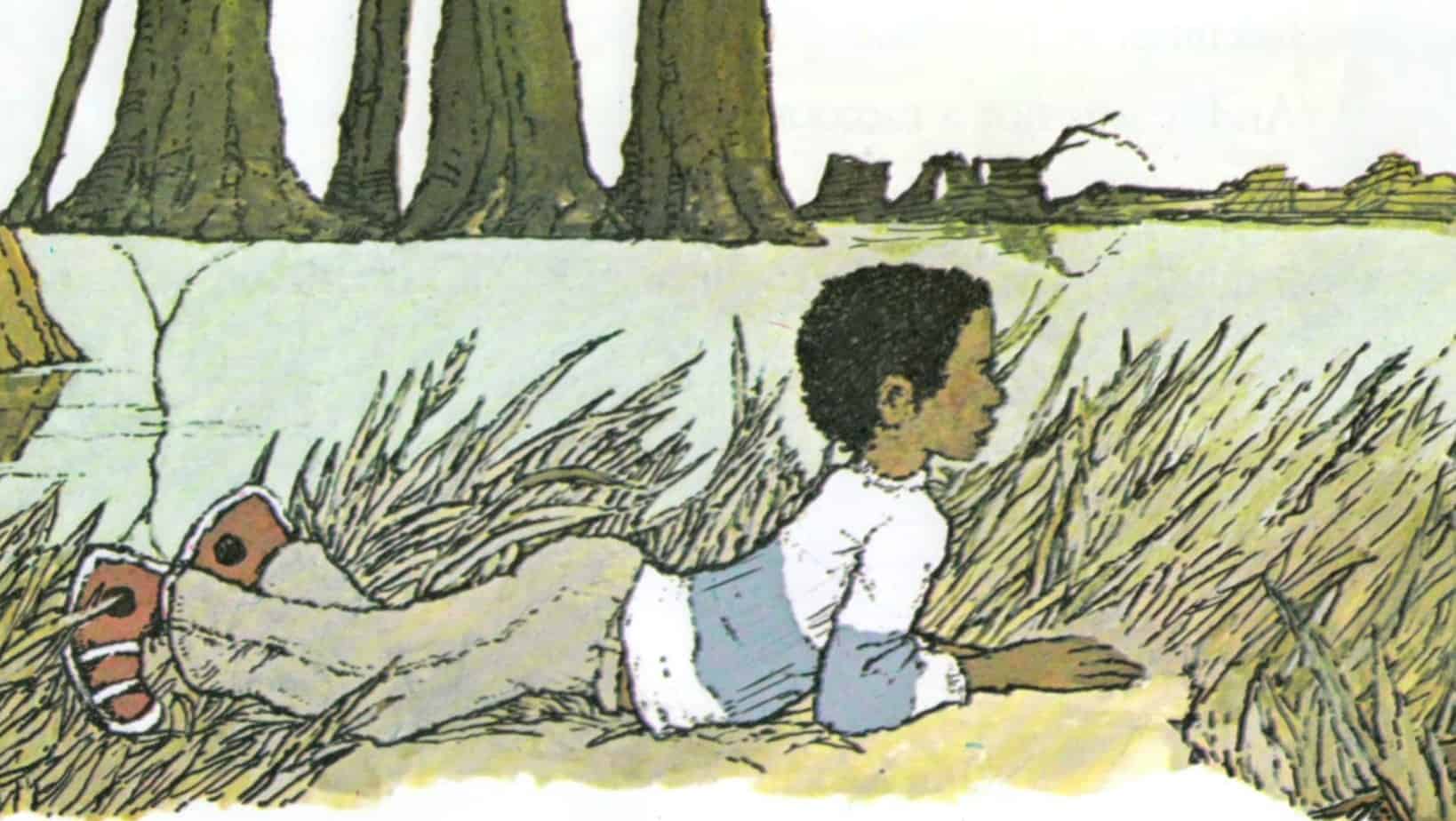
He catches sight of a strange man, attracted first by his peg leg. Kids tend to be grimly fascinated by missing body parts. The man moves like he dances and has a magician quality about him. The reader, alongside Ty, does not know if this man will be an opponent or an ally.
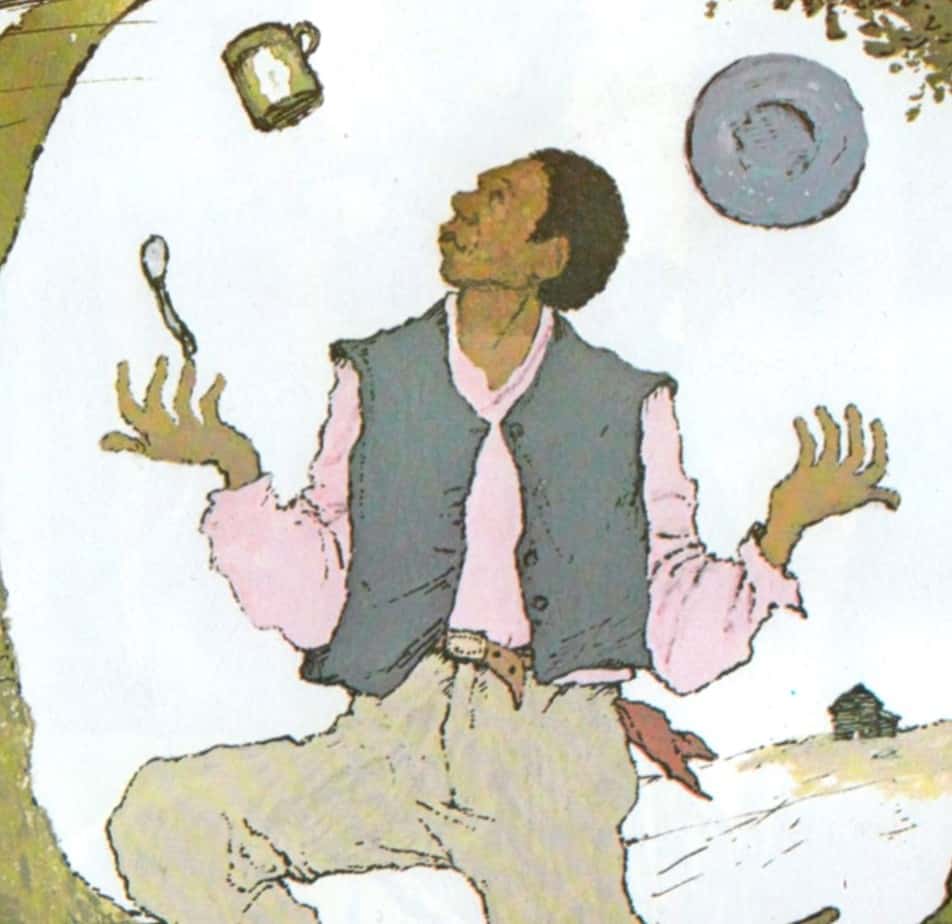
A train passes by. I think the man must have jumped onto the train. I still think he might have, and that the laughing character Ty speaks to is the imaginative version of the man. Isn’t that the whole point of the train scene?
When Ty tells his friends about this guy, the friends become his opponents because they don’t believe him.
Also, “Did you think I wasn’t real?” asks the man once Ty starts talking to him. (Does he ask this precisely because he’s not real?)
PLAN
The man has told Ty to come meet him at night with a number of items. This task of collecting items feels like it’s straight out of a fairytale.
THE BIG STRUGGLE
Ty tells his friends about this man and although the friends don’t believe him, they’re still hanging about, notice. Tension comes from wondering if the man will turn up. The friends raise the stakes, because Ty will be embarrassed if he doesn’t. But the man does turn up.
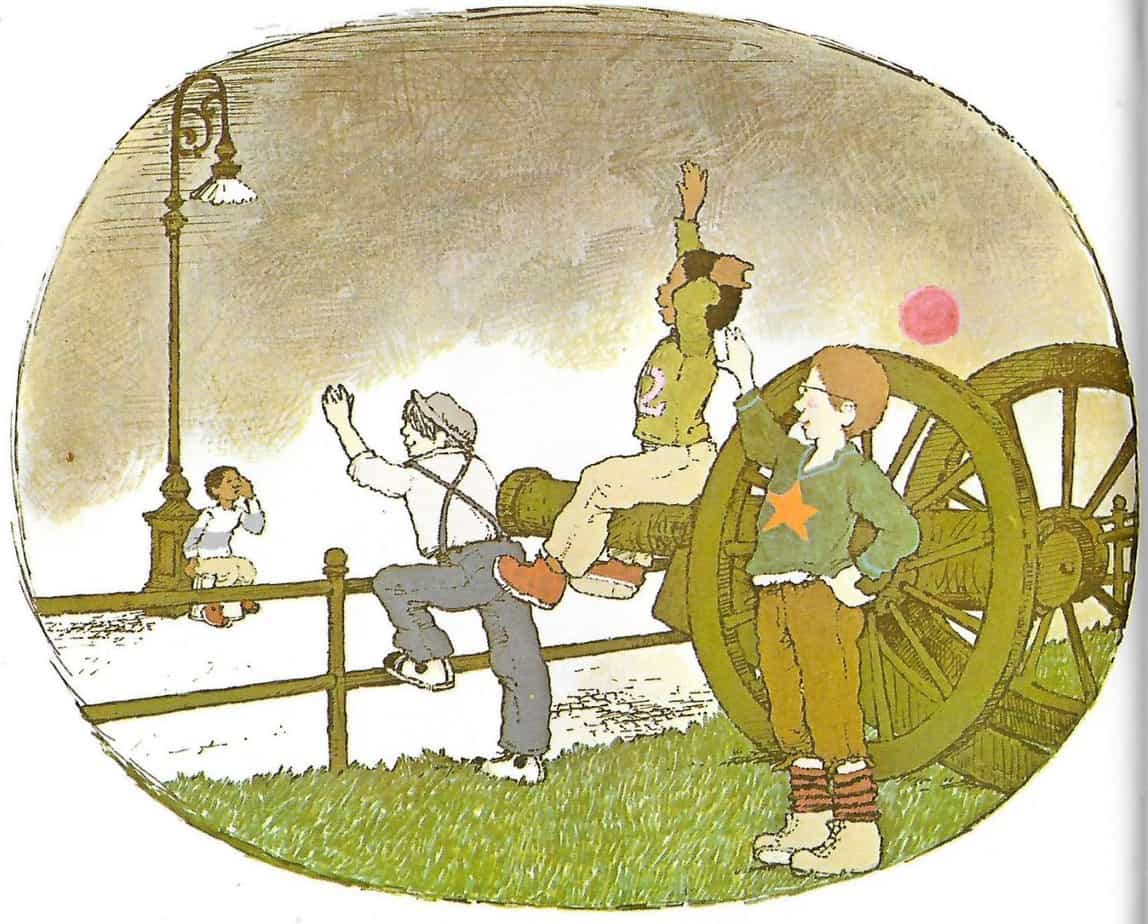
ANAGNORISIS
Ty and the One-Man Band make music together, which brings out the whole town. The united town enjoy music together.
NEW SITUATION
Ty’s status within his community has gone up.
EXTRAPOLATED ENDING
Ty will now enjoy increased social capital, whether that’s because he played the music himself (with the help of an imaginary man) or because the man actually came along to help him.
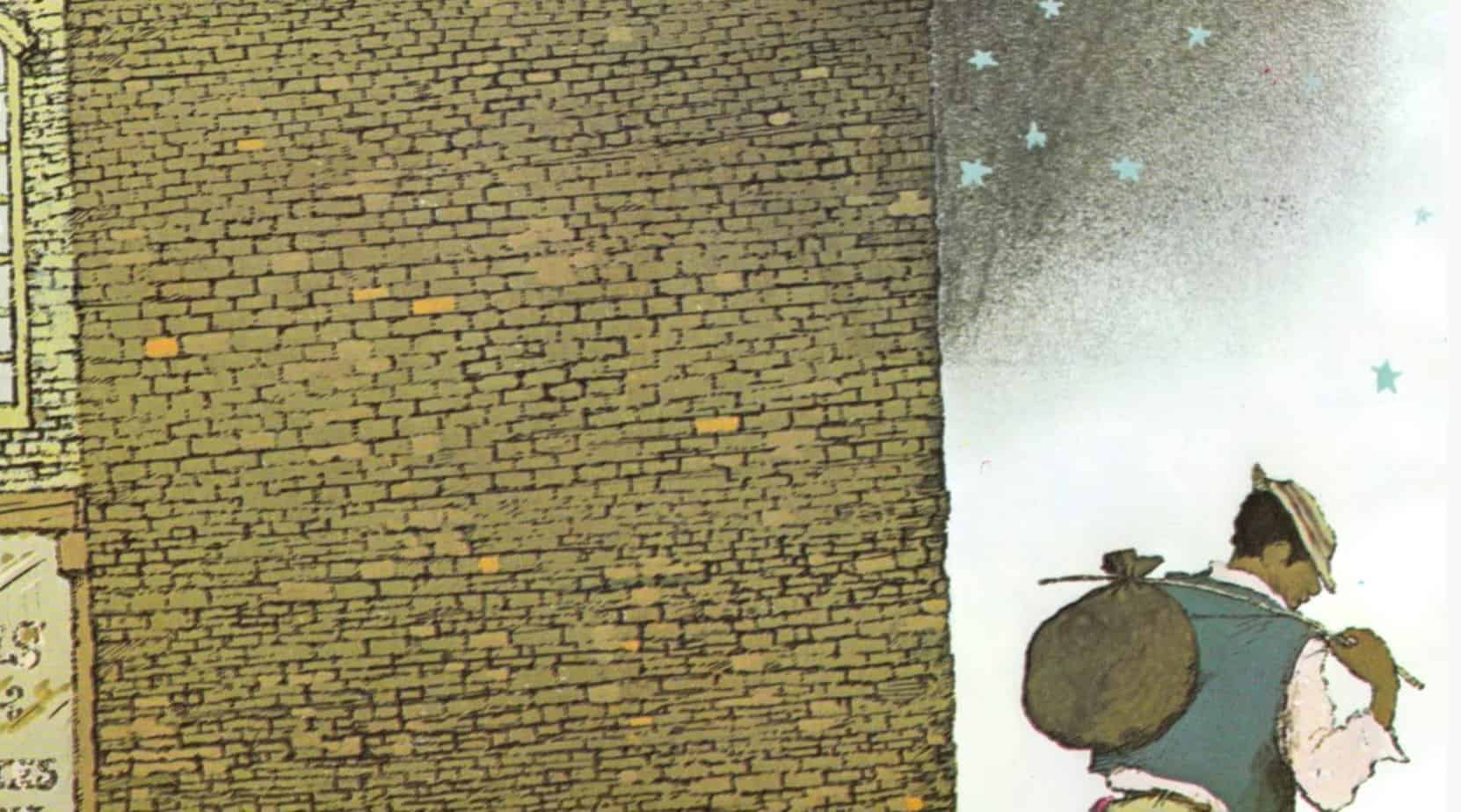
RESONANCE
People will always make music with whatever’s to hand.
As for this particular picture book, why hasn’t it enjoyed the same reprintings as others promoted by Reading Rainbow? Ty’s One-Man Band is still available, but only at print on demand prices.
Well, there will be racist reasons, unfortunately. White parents buy stories about white kids.
Aside from that, I wonder if it’s a bit weird that Ty meets a strange man and no one asks what does he want with hanging around with boys at night near the woods?
Another part of me thinks it’s about the pacing. By today’s standards, this picture book feels a little slow, despite it accurately reflecting the long, hot days of a childhood summer.
